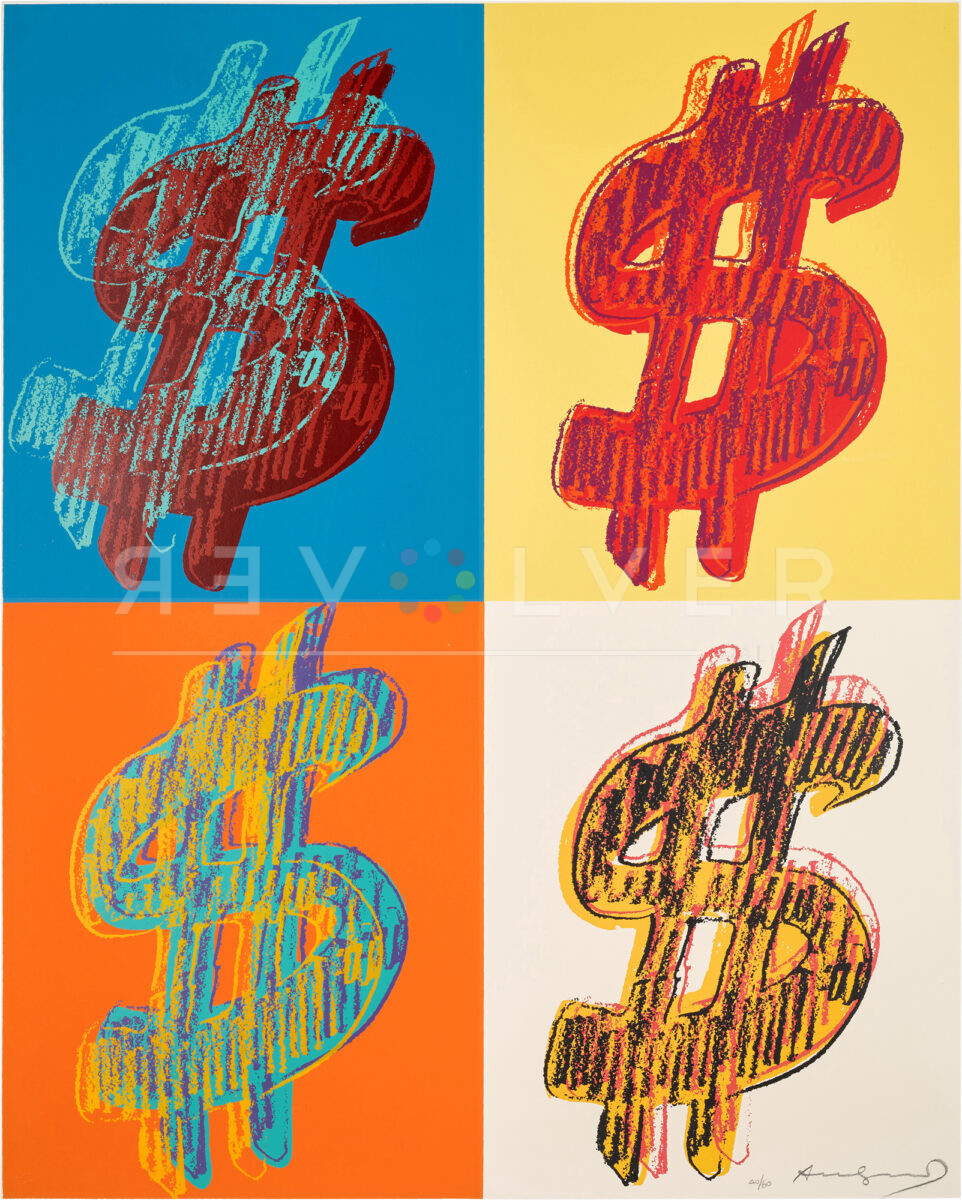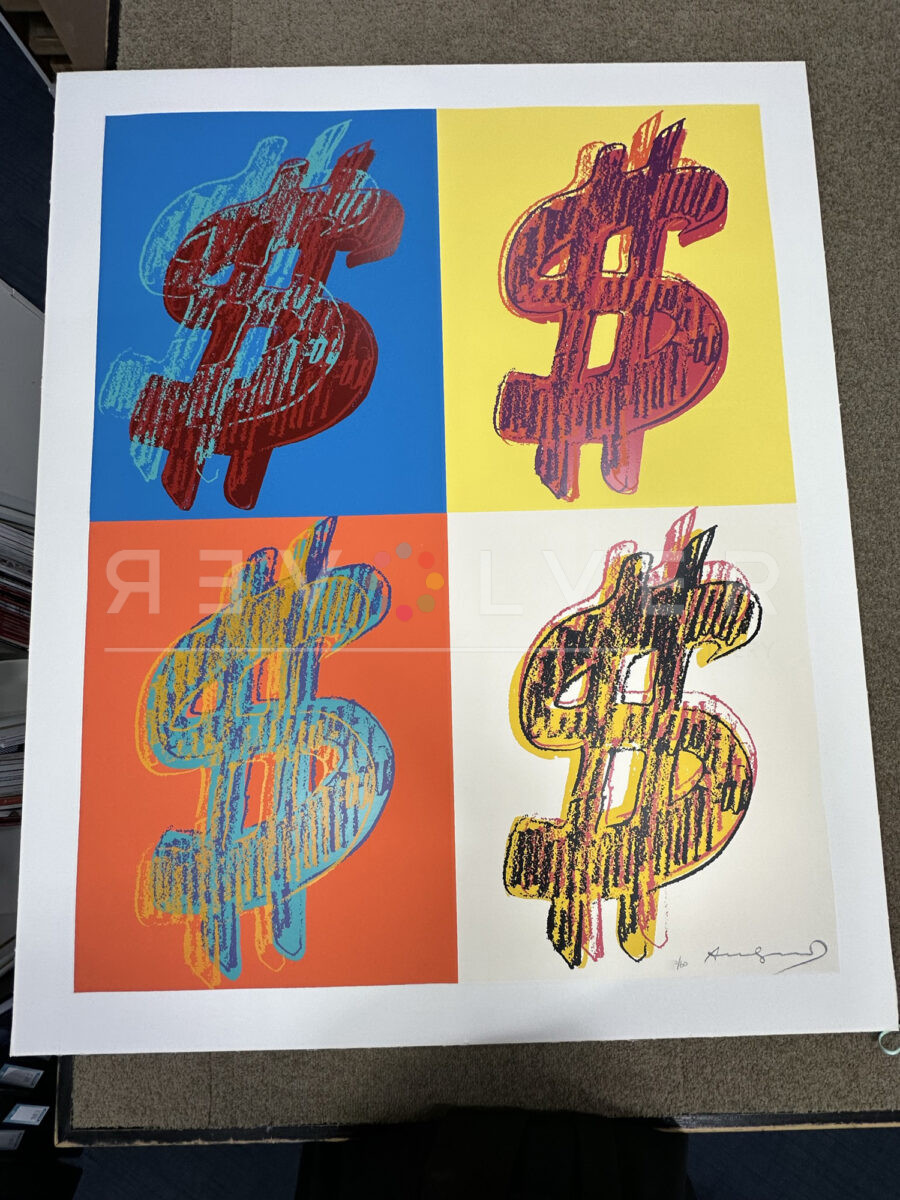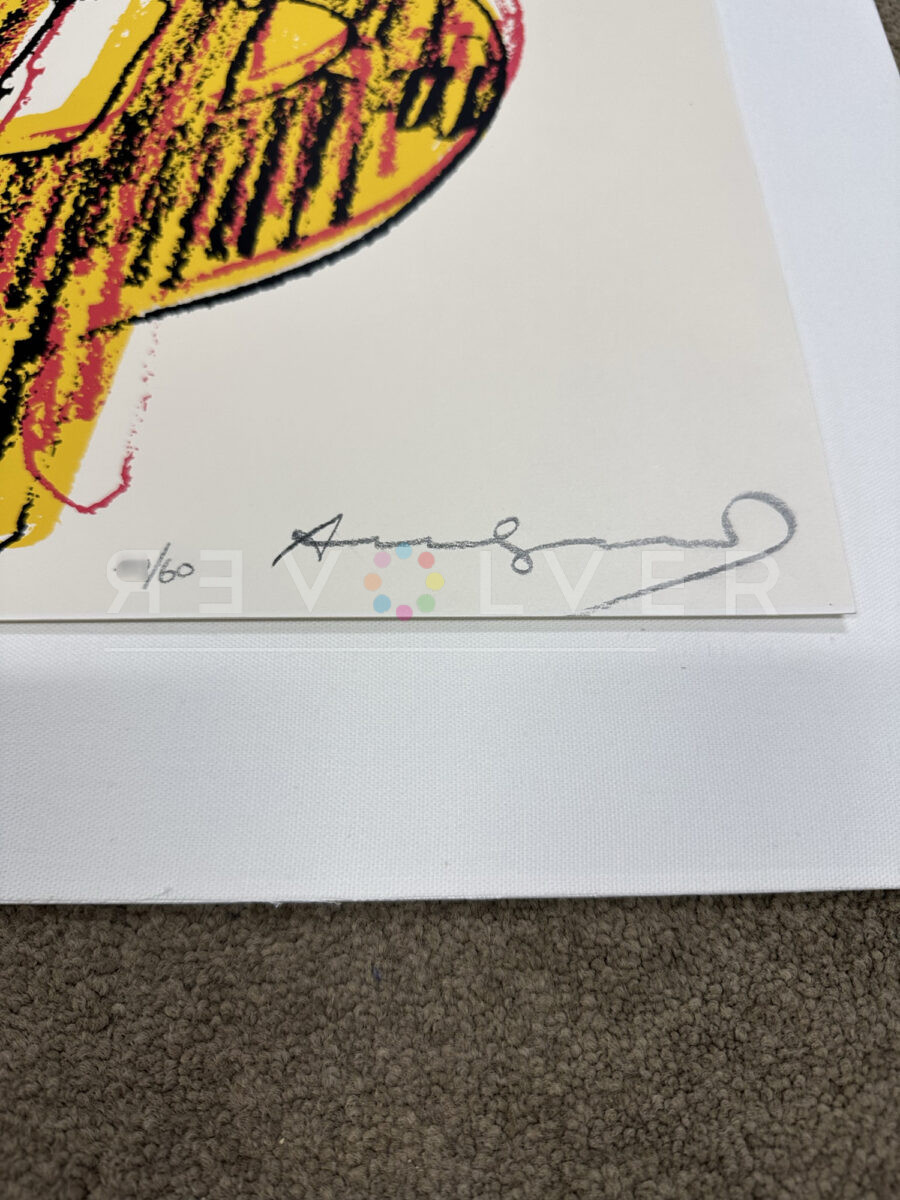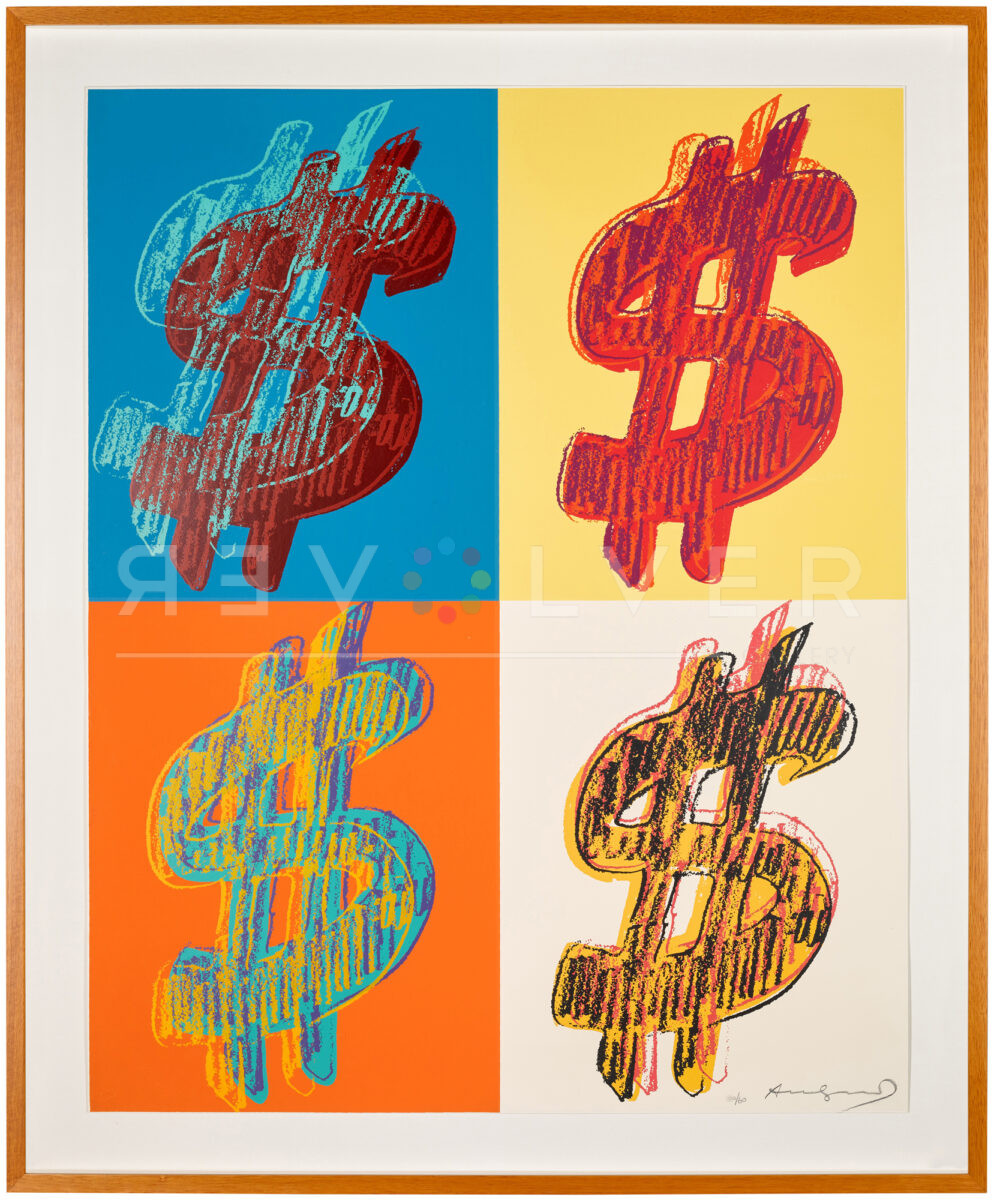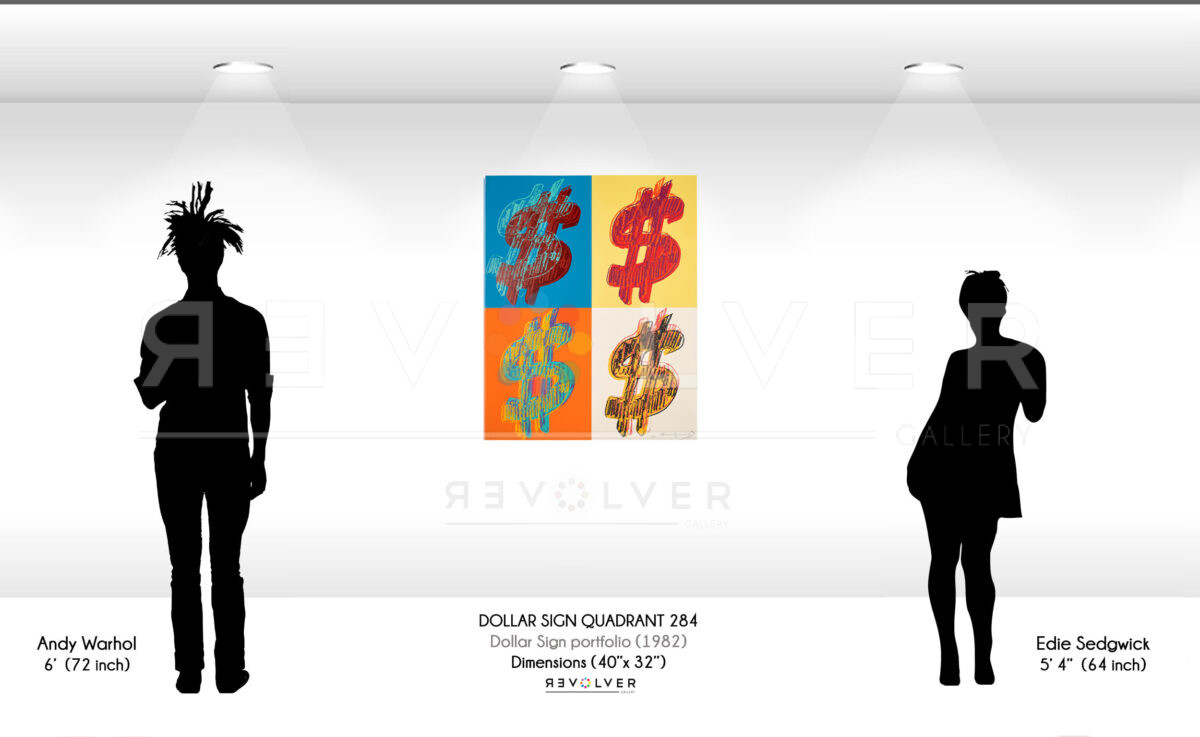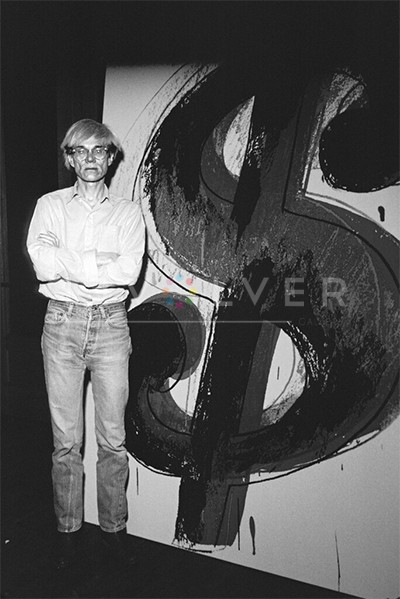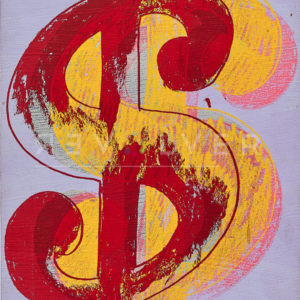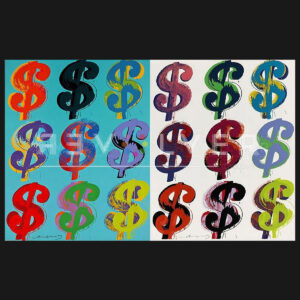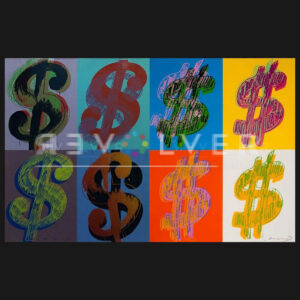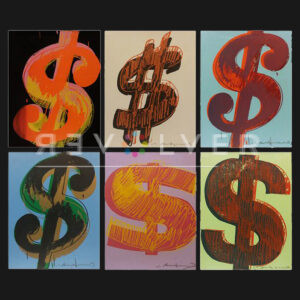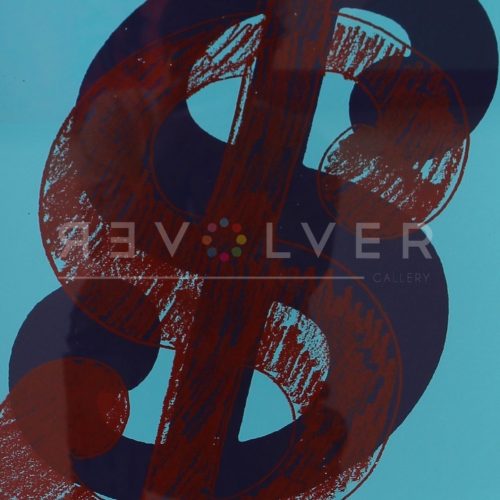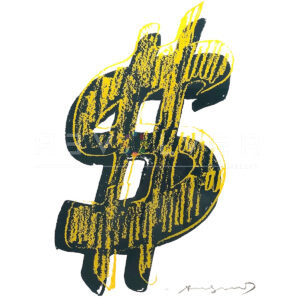Dollar Sign (Quadrant) 284 by Andy Warhol is a screenprint from Warhol’s Dollar Sign (Quadrant) series from 1982. The two prints in this series (as part of a larger Dollar Sign collection) both have distinct styles and compositions. In Dollar Sign (Quadrant) 284, Warhol chose to use an askew, sketched flair, and a primary colored background. The presence of four variations of a single subject on one canvas is a generous design even by Warhol’s standards, who typically created portfolios showing numerous redesigned prints. Dollar Sign is naturally symbolic of Warhol’s career, and is especially appropriate as an early-eighties release.
The sketched overlay on the solid dollar sign is reminiscent of Roy Lichtenstein’s work, who pioneered Pop Art alongside Warhol. The two artists transformed the idea of what might “count” as art, and developed an entirely new artistic element for rendering. Namely, the mundane. However, elevating the mundane into eye catching art requires an attunement to cultural forces that are invisible to most. What greater invisible (yet ubiquitous) force is there to elevate besides money? In this, Warhol reevaluated value by choosing to “put money on the wall”.
In The Philosophy of Andy Warhol, the essence of the Dollar Sign series is summarized. “Say you were going to buy a $200,000 painting. I think you should take that money, tie it up, and hang it on the wall.” The subjects found in Pop Art tended to lend themselves to satire, and Warhol was known to enjoy finding humor in daily life. At times, his wisdom and sense of humor were indistinguishable. Thus, one can deduce both qualities from his works.
Conducting business through art was a priority in Warhol’s creative process. The idea of business art kept Warhol connected to the ever increasing value of his work. For him, one should distinguish between what made a good artist and a bad one. According to Warhol’s personal philosophy, artists who make a business out of their art are undoubtedly the best kind. He even considered conducting business to be the necessary step after creating art. “Business art is the step that comes after art,” Warhol proclaims. “After I did the thing called ‘art’ or whatever it’s called, I went into business art.” Depictions of wealth take many forms in Warhol’s pantheon. For example, the Gems portfolio shows off his interest in a glamorous array of jewels such as rubies, emeralds, and diamonds.
Warhol published a larger version of Dollar Sign, titled Dollar Sign (9), in the same year. The variety found within the 1982 Dollar Sign collection is a testament to Warhol’s devotion to money. The prevalence of so many different dollar sign creations is due to his indecision of which design to settle on. For this reason, the total Dollar Sign collection is one of Warhol’s most expansive and iconic works. Dollar Sign (Quadrant) 284 is a captivating piece of not only Warhol’s legacy, but his personality and philosophy as well.
Photo credit: Andy Warhol with Dollar Sign painting, New York, 1982. Image: © Santi Visalli, Artwork: © 2022 The Andy Warhol Foundation for the Visual Arts, Inc. / Licensed by DACS, London

